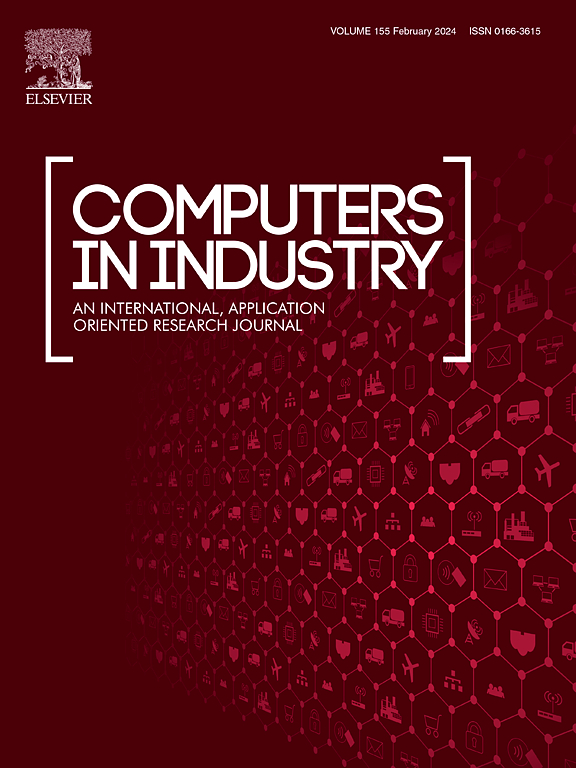An industrial defect detection method based on mixed noise synthesis
IF 9.1
1区 计算机科学
Q1 COMPUTER SCIENCE, INTERDISCIPLINARY APPLICATIONS
引用次数: 0
Abstract
Deep learning-based methods have significantly reduced the cost of traditional manual quality inspection while enhancing accuracy and efficiency in industrial defect detection. As a result, these methods have become a prominent research focus in computer vision for intelligent manufacturing. They are increasingly applied in various production and operational contexts, including automated inspection, intelligent monitoring, and quality control. This paper presents a novel method called mixed noise synthesized defect detection, designed to identify multiple types of defects in industrial products. The proposed method employs a generative adversarial network architecture composed of a defect synthesizer, a defect discriminator, a feature extractor, and a multi-scale patch adaptor. By leveraging the feature extractor and multi-scale adaptor, the method effectively captures normal feature distributions and synthesizes realistic defect features through mixed noise synthesis, thereby significantly reducing reliance on labeled data. In addition, the defect discriminator uses a dual evaluation strategy that combines adversarial loss with Kullback–Leibler divergence to assess input features and quantify defect severity. Comprehensive experiments on benchmark anomaly detection datasets demonstrate that the method achieves high performance, with image-level and pixel-level area under the receiver operating characteristic curve scores of 99.8% and 99.4% for texture categories, and 96.7% and 98.3% for object categories, substantially outperforming state-of-the-art methods. The source code is publicly available at https://github.com/ah-ke/MNS-Defect.git.
基于混合噪声合成的工业缺陷检测方法
基于深度学习的方法大大降低了传统人工质量检测的成本,同时提高了工业缺陷检测的准确性和效率。因此,这些方法已成为智能制造计算机视觉领域的一个突出研究热点。它们越来越多地应用于各种生产和操作环境,包括自动检测、智能监控和质量控制。本文提出了一种新的混合噪声综合缺陷检测方法,用于识别工业产品中多种类型的缺陷。该方法采用由缺陷综合器、缺陷鉴别器、特征提取器和多尺度贴片适配器组成的生成式对抗网络结构。该方法利用特征提取器和多尺度适配器,有效捕获正态特征分布,并通过混合噪声合成合成真实缺陷特征,从而显著降低对标记数据的依赖。此外,缺陷鉴别器采用对抗性损失与Kullback-Leibler散度相结合的双重评估策略来评估输入特征并量化缺陷严重程度。在基准异常检测数据集上进行的综合实验表明,该方法取得了较好的性能,纹理类和对象类的图像级和像素级接收器工作特征曲线下的面积得分分别为99.8%和99.4%,目标类的得分分别为96.7%和98.3%,大大优于现有方法。源代码可在https://github.com/ah-ke/MNS-Defect.git上公开获得。
本文章由计算机程序翻译,如有差异,请以英文原文为准。
求助全文
约1分钟内获得全文
求助全文
来源期刊

Computers in Industry
工程技术-计算机:跨学科应用
CiteScore
18.90
自引率
8.00%
发文量
152
审稿时长
22 days
期刊介绍:
The objective of Computers in Industry is to present original, high-quality, application-oriented research papers that:
• Illuminate emerging trends and possibilities in the utilization of Information and Communication Technology in industry;
• Establish connections or integrations across various technology domains within the expansive realm of computer applications for industry;
• Foster connections or integrations across diverse application areas of ICT in industry.
 求助内容:
求助内容: 应助结果提醒方式:
应助结果提醒方式:


